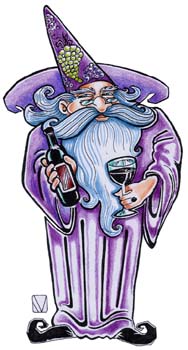 Unless you artificially carbonate your still wines by kegging them, there is only one possible source of carbon dioxide in wines — microbes, specifically little bacteria and yeastie beasties that love to inhabit wine even after all of the fermentable sugar has been used up.
Unless you artificially carbonate your still wines by kegging them, there is only one possible source of carbon dioxide in wines — microbes, specifically little bacteria and yeastie beasties that love to inhabit wine even after all of the fermentable sugar has been used up.
If you’ve measured your wine for dryness by using a hydrometer — and it sounds like you have — you’re most likely experiencing the joys of a prolonged malolactic fermentation. Malolactic fermentations occur when certain strains of bacteria eat the malic acid naturally present in grapes and spit it out as lactic acid and carbon dioxide gas. Some strains are better for wine quality than others, but many common malolactic bacteria can be found just floating in the air around us. There are some less common spoilage microorganisms that produce carbon dioxide, but malolactic bacteria is likely your number-one culprit.
In order to get the carbon dioxide to come out, I suggest you take the patient approach — wait. Eventually the malolactic bacteria will consume all of the malic acid and will no longer produce any more carbon dioxide. Don’t rack the wine again during your waiting period, because the lees in the carboys can actually help the bacteria finish their job by providing them with micronutrients and other goodies they need to survive. Racking will also aerate the wine and inhibit the malolactic bacteria, as they are anaerobic. Keep your wine out of the cold — keep the temperature above 60° F — so that the malolactic bacteria aren’t killed off and can keep working. In the meantime, try to keep your containers topped up in order to stave off any micro-aerophilic spoilage organisms (like the vinegar-producing Acetobacter). You can test for the completeness of your malolactic fermentation by using a paper chromatography kit, available through most home winemaking supply stores or mail-order catalogs.
Once malolactic fermentation is complete, rack the wine off the lees, add sulfur dioxide if desired and bottle as usual. One of the reasons that winemakers actively encourage malolactic fermentation is that it lessens the need for pre-bottling filtration. If there is no more malic acid left for the malolactic bacteria to eat, it’s not a problem if some of them get through the filter and into the bottle . . . unless, of course, you want a little fizz in your wine later on down the road!
For more of the Wine Wizard’s wit and wisdom, pick up the latest issue of WineMaker, now available at better winemaking shops and bookstores throughout North America.




